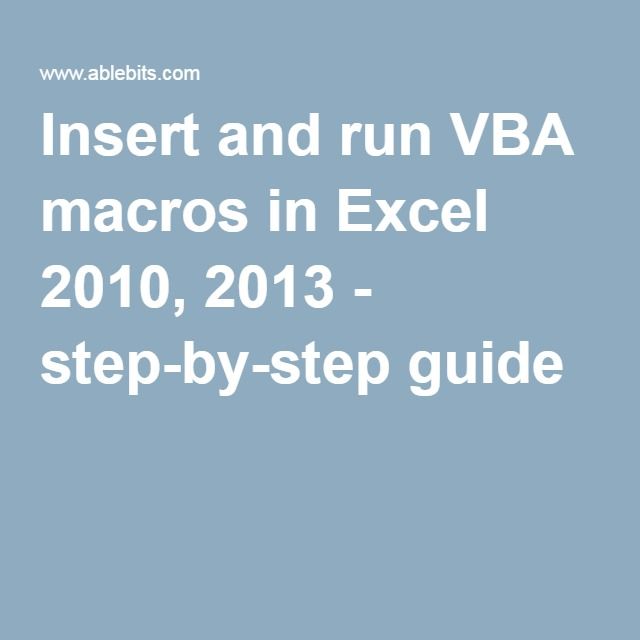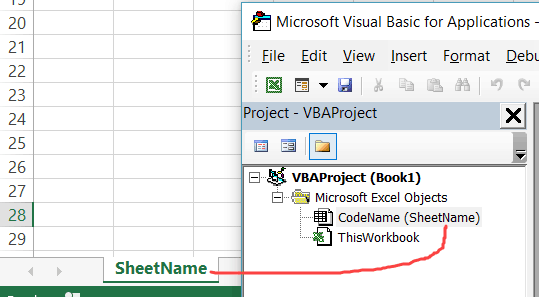5 VBA Hacks to Insert Data into Excel

Mastering Visual Basic for Applications (VBA) can significantly enhance your productivity in Excel, particularly when it comes to automating the insertion of data. In this post, we'll explore five effective VBA hacks to help you insert and manage data seamlessly. These techniques will not only save you time but also ensure that you can manage complex tasks with ease.
1. Quick Fill Using VBA

One of the simplest yet highly useful VBA hacks is automating the fill down operation. Instead of manually dragging or copying data, you can use VBA to fill cells in a column quickly.
Sub QuickFillDown()
Dim lastRow As Long
lastRow = Cells(Rows.Count, 1).End(xlUp).Row
Range(“A2:A” & lastRow).FillDown
End Sub
💡 Note: This script assumes your data starts in cell A1.
2. Batch Data Entry

If you need to insert multiple rows of data at once, VBA can be programmed to perform batch operations, reducing the manual effort involved:
Sub BatchDataEntry()
Dim rng As Range
Dim i As Integer
Set rng = Range(“A1:C100”)
For i = 1 To 100
Cells(i, 1).Value = “Product ” & i
Cells(i, 2).Value = Rnd * 100
Cells(i, 3).Value = Format(DateAdd(“d”, Int(Rnd * 365), Date), “dd-mm-yyyy”)
Next i
End Sub
This macro will automatically fill the first 100 rows with product names, random prices, and future dates.
3. Inserting Data from External Sources

VBA can facilitate the import of data from various external sources like databases, text files, or even web pages:
Sub ImportDataFromFile()
Dim FilePath As String
FilePath = Application.GetOpenFilename(“Text Files (.txt),.txt”)
If FilePath = “False” Then Exit Sub
With ActiveSheet.QueryTables.Add(Connection:=“TEXT;” & FilePath, Destination:=Range(“A1”))
.TextFileStartRow = 1
.Refresh
End With
End Sub
💡 Note: Remember to adjust the text file settings according to your data structure.
4. Creating Dynamic Ranges with VBA

VBA allows you to define named ranges that automatically adjust based on data changes. This is particularly useful for charts or tables that need to update dynamically:
Sub CreateDynamicRange()
ActiveWorkbook.Names.Add Name:=“SalesData”, RefersTo:=Range(“A1”).CurrentRegion
End Sub
Using this script, you can reference ‘SalesData’ anywhere in Excel, and it will dynamically adjust its size based on the data in its surrounding region.
5. Macro for Inserting Blank Rows

Here’s a simple yet powerful trick for inserting multiple blank rows into your dataset:
Sub InsertBlankRows()
Dim rng As Range
Dim i As Long
Set rng = Selection
For i = rng.Rows.Count To 1 Step -1
rng.EntireRow.Insert
Next i
End Sub
Select a range of rows, and this macro will insert an equal number of blank rows above each selected row.
In wrapping up this exploration of VBA hacks for inserting data into Excel, it’s clear that automation through VBA can transform mundane data entry tasks into swift, efficient processes. By employing these methods, you’ll not only save time but also reduce the likelihood of manual errors. Whether you’re filling down data, batch importing, handling external data sources, or managing dynamic ranges, these VBA techniques are designed to enhance your productivity.
For those interested in diving deeper, remember that Excel’s versatility, combined with VBA’s scripting power, provides an almost endless playground for creativity in data manipulation.
What are the benefits of using VBA for data insertion?

+
VBA automation offers several key advantages: speed, accuracy, and the ability to handle repetitive tasks with ease. By automating data entry, you reduce human error and can focus on more strategic tasks.
Can VBA really reduce errors in data entry?

+
Yes, VBA scripts run the same set of instructions each time, minimizing the chance of human mistakes. It ensures consistency and reduces errors like typos or misaligned data entries.
Are there any prerequisites for using these VBA hacks?

+
Basic knowledge of Excel and VBA is helpful. Additionally, you might need to enable macros in Excel, and for some operations, administrative rights might be necessary to interact with external files or databases.